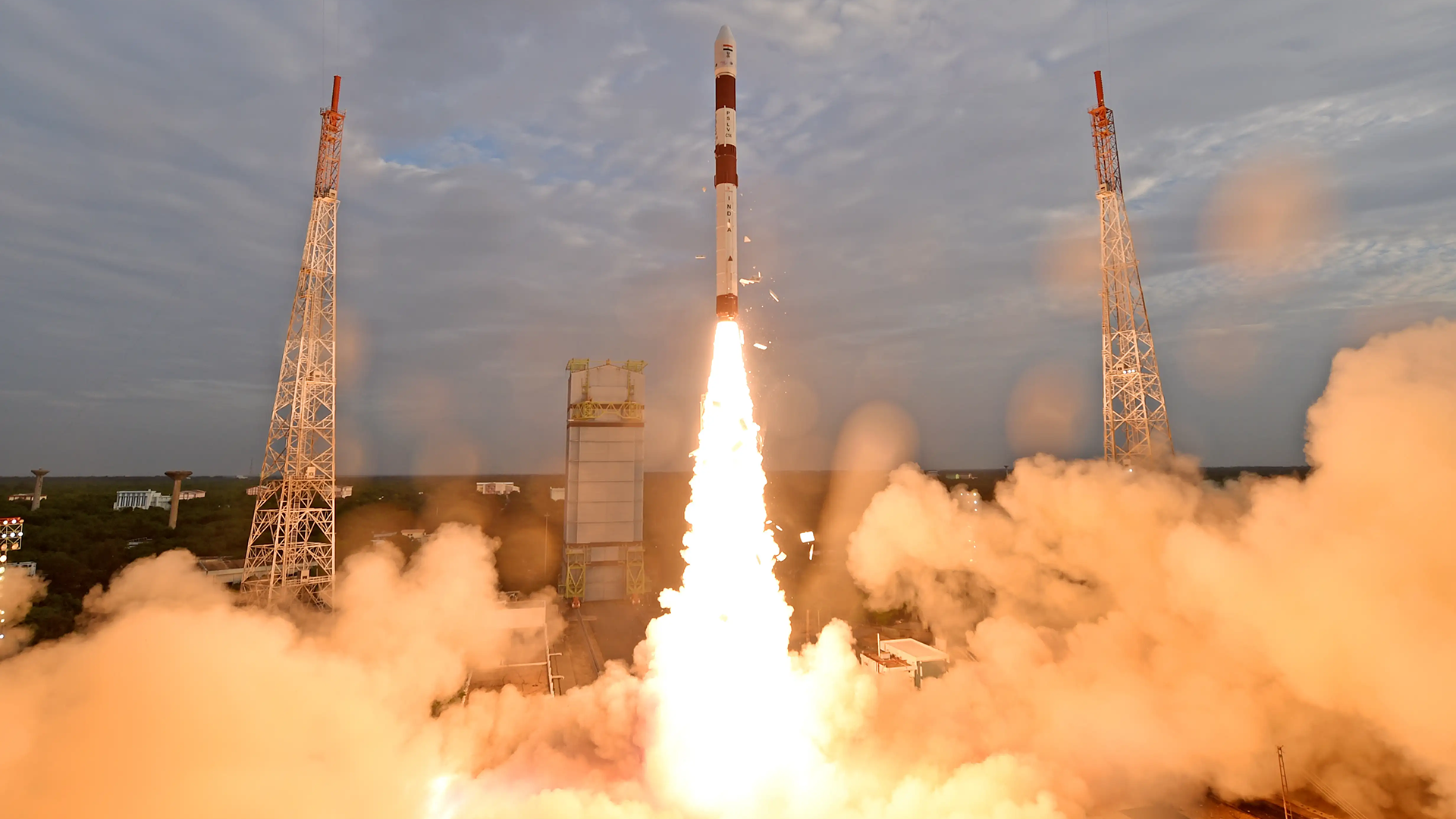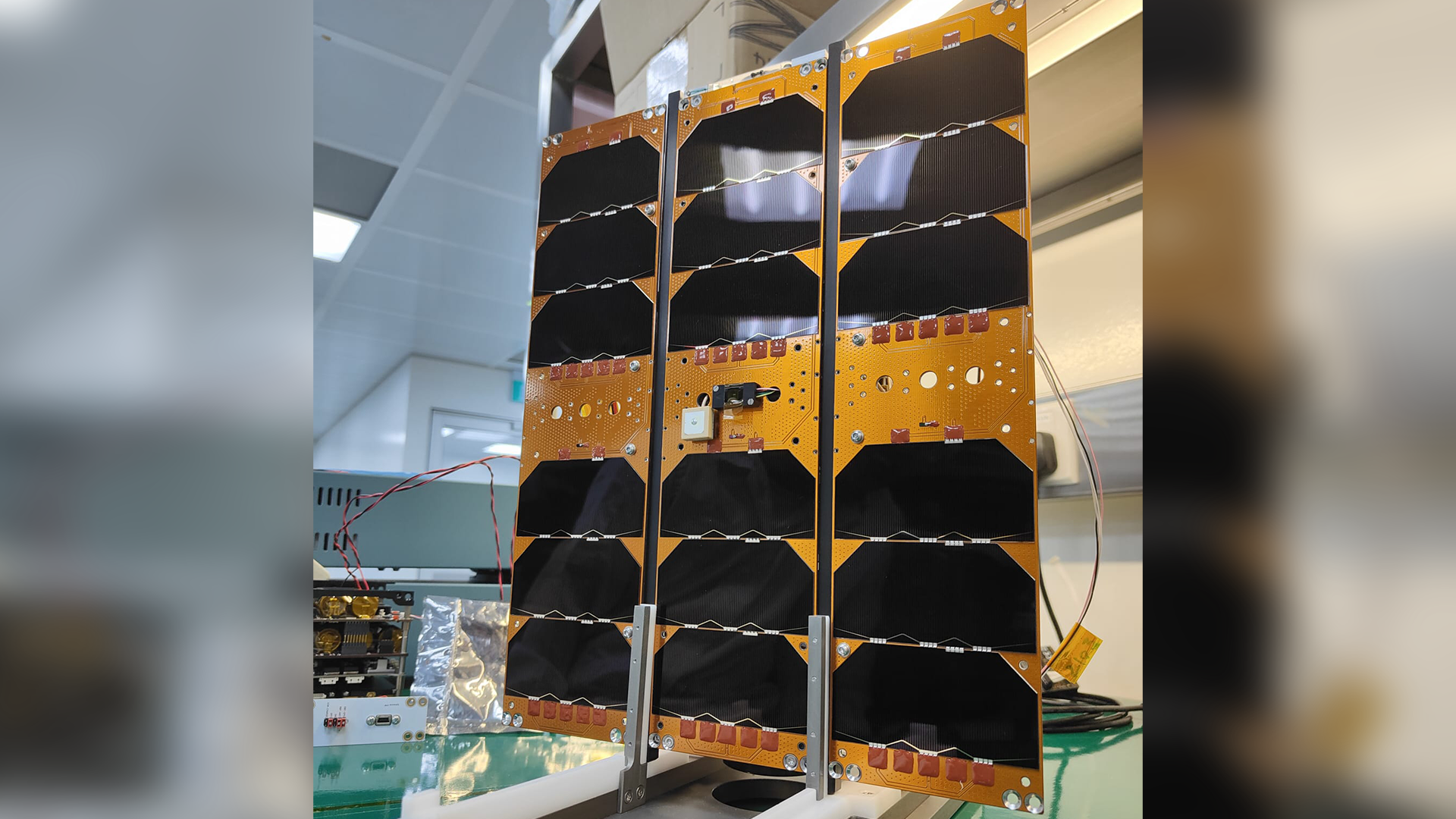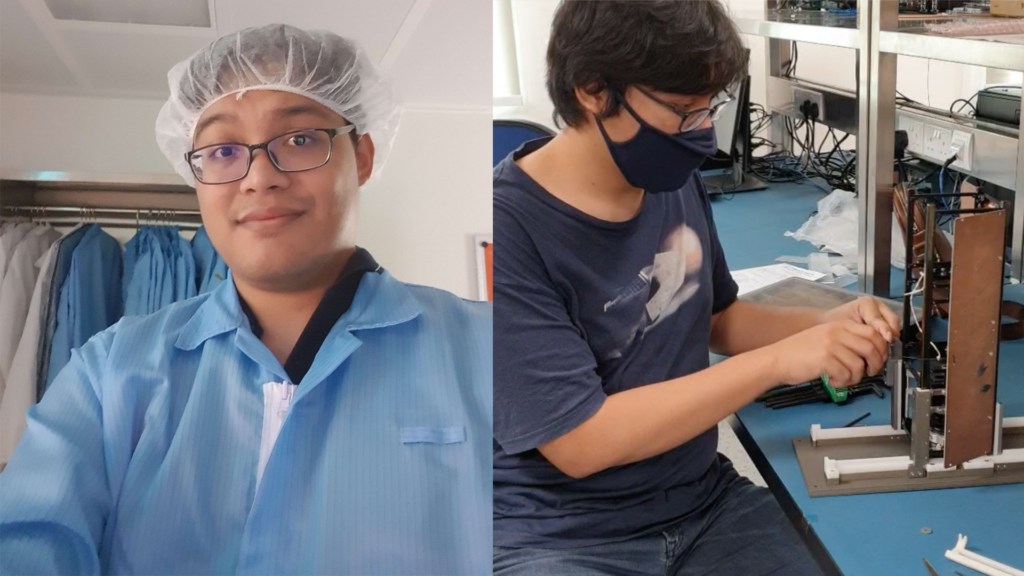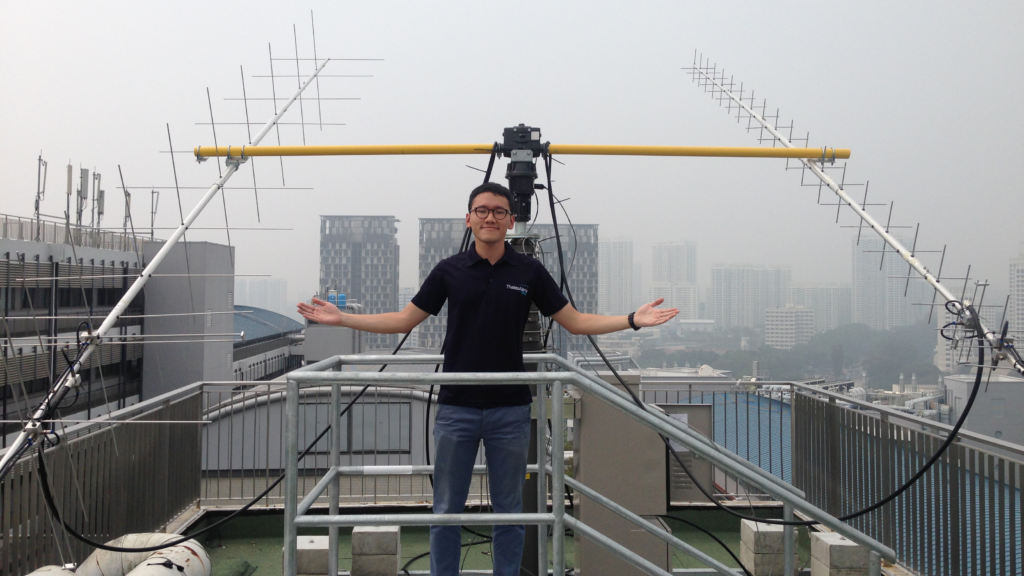
A remote sensing nanosatellite built by multidisciplinary students from CDE has been successfully launched into orbit from the Satish Dhawan Space Centre near Chennai in southern India.
Galassia-2 blasted off at 9:00 AM on 30 July 2023 aboard PSLV-C56, a rocket operated by the Indian Space Research Organisation (ISRO).
Galassia-2 is a 3U CubeSat class of nanosatellite, measuring 300 millimeters tall, 100 millimeters long by 100 millimeters wide and weighs about four kilograms. Its primary mission is remote sensing for agriculture and environmental change using a multispectral camera on board.
Galassia-2 was launched alongside six other satellites, including the 351.9 kilogram DS-SAR, a Singapore-owned earth observation satellite.

‘Shaping the future’
After deployment, mission controllers will spend the next few days stabilising and establishing contact with Galassia-2, checking that all the deployables have performed correctly, and conducting functional tests for the satellite’s sub-systems before beginning the mission proper. It is expected to be operational for between six months and a year.
The project was conceptualised in 2017 by a team of research staff and developed with around 20 multidisciplinary Final Year Project (FYP) students from CDE’s Innovation and Design Programme (iDP) and Department of Electrical and Computer Engineering.
“The successful launch and deployment of Galassia-2 is another demonstration of CDE’s leading role in training the next generation of space engineers here in Singapore,” said Professor Teo Kie Leong, Acting Dean of CDE.
“By bringing together students from various engineering disciplines the Galassia project is an opportunity to push technological boundaries and shape the future of Singapore’s space industry. I hope today’s inspiring launch will encourage more students to develop their talents and skills in this important and fast-growing field.”

Student-built projects
Galassia-2 follows on the heels of the first Galassia nanosatellite launched in December 2015, which alongside Kent Ridge 1 became the first NUS-built satellites to go into orbit.
The project is supported by the Engineering Design and Innovation Centre (EDIC), the Satellite Technology And Research Centre (STAR) and the Centre for Remote Imaging, Sensing and Processing (CRISP) at NUS.
“Galassia-2 is envisioned as part of a series of student-built nanosatellite projects,” said EDIC instructor and project leader Eugene Ee, who has been involved in the CubeSat development since the start of the project.
“It builds on the knowledge gained from the Galassia experience in 2015 and features several in-house undergraduate student-developed components such as the payload computer, solar panel release system, attitude determination and control subsystem and battery pack.”

During Galassia-2’s mission, controllers expect to be in contact with the satellite on a weekly basis and will downlink images from it over the S Band frequency via the ground station at CRISP. Project leaders plan to include CDE students in the operations to provide training in performing mission control operations and encourage interest in space-based technologies.
Earlier this year another NUS satellite, Lumelite-4 built by researchers at the NUS STAR Centre, was also launched into orbit aboard a PSLV rocket from the same space centre in southern India.
| Launching careers in space tech
Yohanes Evangelista Yudhistira studied Mechanical Engineering (Class of 2018) and went through the Design Centric Programme (now known as the Innovation and Design Programme) which led to him being involved in the construction of Galassia-2. He is currently based in California, working for Parsons Corp on their satellite integration programme, and previously worked for SpinLaunch, helping to develop cameras able to withstand the extremely high g-forces of the launch system.
“As a student, I was responsible for developing the structure of Galassia-2, the mechanisms of the solar panel deployment system, and the vibration test plan. Subsequently, staying at NUS as a research engineer, I was responsible for the final structure of Galassia-2 including the solar panel deployment system, structural analysis, orbital thermal analysis, as well as preparations for vibration and thermal vacuum testing and integration of Galassia-2. Working on the Galassia programme helped me a lot in understanding the landscape of the space industry. It also armed me with the required skill set to thrive in the industry, such as design, analysis, testing, team collaboration, as well as project management. Seeing Galassia-2 head into orbit, the feeling is a mixture of anticipation, excitement, and relief, knowing that the culmination of multiple years of effort from students and staff is finally ready to fly. My advice to those thinking of a career in space engineering: Stay curious, and always ask questions! Engineers are always excited to share what they know and you can learn a whole lot of knowledge that will be useful in your career.”
Ajie Nikicio studied Electrical and Computer Engineering (Class of 2015), went through the Design Centric Programme (now known as the Innovation and Design Programme), and worked on the first Galassia nanosatellite and then Galassia-2 as a Research Engineer. In 2020 he launched his own satellite technology start-up, Netra.
"After graduation, working as a Research Engineer on the Galassia-2 project, I was responsible for developing the guidance, navigation and control (GNC) systems on the satellite, working with IDP students on both the hardware and software. Building on what we had learned from the first Galassia satellite, we wanted to push the technology further. "Incorporating an imagery payload on Galassia-2 was not an easy task. The satellite avionics were far more challenging than the first Galassia - requiring, for example, higher energy capacity, bigger data storage, higher data transmission and more precise manoeuvring. Nonetheless, we wanted to prove that our team could launch increasingly sophisticated satellites despite our limited experience and resources, while also building up the capacity and know-how at NUS. Working on a satellite project is complex by nature, involving so many parts. I believe this made me rather accustomed to challenging projects and working environments, shaping me to never be satisfied too early and always do better. The experience working on Galassia-2 led me to pursue further graduate studies at MIT and eventually to launch Netra, a start-up which aims to bring affordable satellite-based asset tracking and connectivity services to industries operating in remote areas of Indonesia." |







